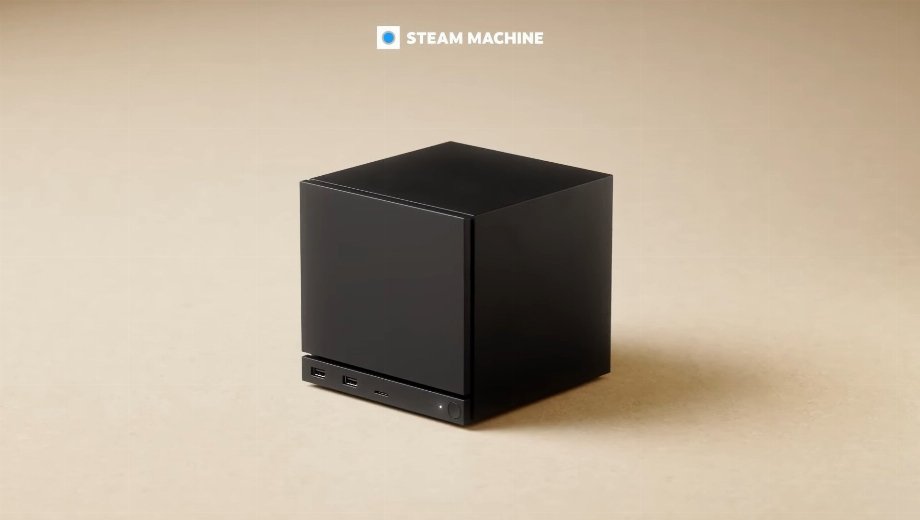Valve’s New Steam Machine Threatens Xbox and Even Windows’ Gaming Grip With Living-Room PC Power

Valve is returning to the home console space in early 2026 with a compact and powerful new Steam Machine. The cube-shaped system measures about 152 × 162 × 156 mm, so it fits neatly under a TV. Valve optimizes the device for SteamOS. Even so, the open design lets you install other operating systems if you want. Windows Central describes this box as a bridge between traditional PC gaming and living room simplicity.
Valve stresses that the Steam Machine is not a standard console. In a conversation with GameSpot, engineers explained that the device belongs inside the broader PC ecosystem. They see it as separate from Xbox or PlayStation rather than a direct rival on the same shelf. Their aim is not to fight for a share of the console aisle. Instead, they want to serve existing PC players who prefer a box that feels like a console but still behaves like a PC.
High-End Hardware Meets Modular Design
The Steam Machine’s internals target serious gaming workloads. It uses a semi-custom AMD Zen 4 CPU with 6 cores and 12 threads. A semi-custom RDNA 3 GPU with 28 Compute Units handles graphics. Per reporting from PC Games Hardware, the CPU can boost up to 4.8 GHz at around 30 W TDP. The GPU includes 8 GB of GDDR6 VRAM. Valve pairs this with 16 GB of DDR5 system memory for modern titles and multitasking.
For storage, you can choose a 512 GB NVMe SSD. There is also a 2 TB NVMe option for larger libraries. On top of that, you get a microSD slot for additional space. Valve claims the machine delivers more than six times the performance of a Steam Deck. With FSR upscaling enabled, it can hit 4K at 60 FPS. Despite this power, the design still focuses on flexibility. You can expand storage, add alternative storefronts, or boot into different operating systems.
SteamOS by Default, but Windows Is Welcome
Software flexibility stands out as one of the Steam Machine’s biggest strengths. Out of the box, it runs Valve’s Linux-based SteamOS. The system is tuned for the Steam library and the living room interface. If you prefer Windows, you can install it and run your usual launchers and apps.
This open approach avoids artificial app restrictions. It also prevents lock-in to a single storefront. Full mod support remains on the table for games that work well with Proton or run natively. However, titles that rely on strict anti-cheat systems may still refuse to run under Linux. That limitation can reduce the appeal for players who focus on competitive multiplayer.
A New Headache for Microsoft’s Xbox and Windows Strategy
Valve’s move does more than add another piece of hardware to the market. It also creates fresh pressure for Microsoft on the console side of its business. At the same time, it nudges the Windows PC space. By shipping a high-powered, Steam-first box that can still run Windows, Valve offers an alternative path for living room gaming. Over time, that path could chip away at Xbox and Windows dominance under the TV.
Gadgets 360 frames this design as a direct challenge to Microsoft’s long-term hardware plans. Valve no longer acts only as a software partner that feeds games into the Windows ecosystem. With the Steam Machine, the company now competes for the same spot under the TV. It offers a box that speaks PC language but wears console clothes.
Not everyone sees the device as a threat, though. Some industry voices argue that a successful Steam Machine could actually help Microsoft. Extra third-party hardware could shift pressure away from Xbox console sales. Former Blizzard and Xbox executive Mike Ybarra, for example, suggests that stronger third-party hardware might let Microsoft focus more on content and services. That shift could reduce the need to chase every console hardware cycle.
Implications for Experienced Gamers
For veteran players and PC enthusiasts, the Steam Machine paints an attractive picture. You get a powerful, dedicated gaming box that still behaves like a PC in the ways that matter. You avoid lock-in to a single storefront. You choose your operating system. Over time, you can tweak or upgrade key parts.
At the same time, the device will not suit every player. Fans of anti-cheat-heavy competitive titles may feel safer with a traditional Windows PC. People who demand guaranteed Windows compatibility for every game might also stick with Xbox or a full desktop. For those groups, the risks around Proton support and publisher decisions can outweigh the benefits of the compact design.
If Valve can hit a reasonable price point, the Steam Machine could become a long-term anchor for living room PC gaming. It offers more power and permanence than a Steam Deck running through a dock. Yet it still feels more flexible and user-centric than most classic consoles. In that sense, Valve is betting not only on hardware. The company is also betting on a future where players expect to truly own and shape their gaming environment.





![The Outer Worlds 2 v1.0-v20251101+ (+37 Trainer) [FLiNG]](https://9588947a.delivery.rocketcdn.me/wp-content/uploads/2025/10/The-Outer-Worlds-2-01-464x276.jpg)

![Dying Light 2 Stay Human v1.0-v1.25+ (+33 Trainer) [FLiNG]](https://9588947a.delivery.rocketcdn.me/wp-content/uploads/2024/03/dying-light-2_0-464x276.jpg)


























